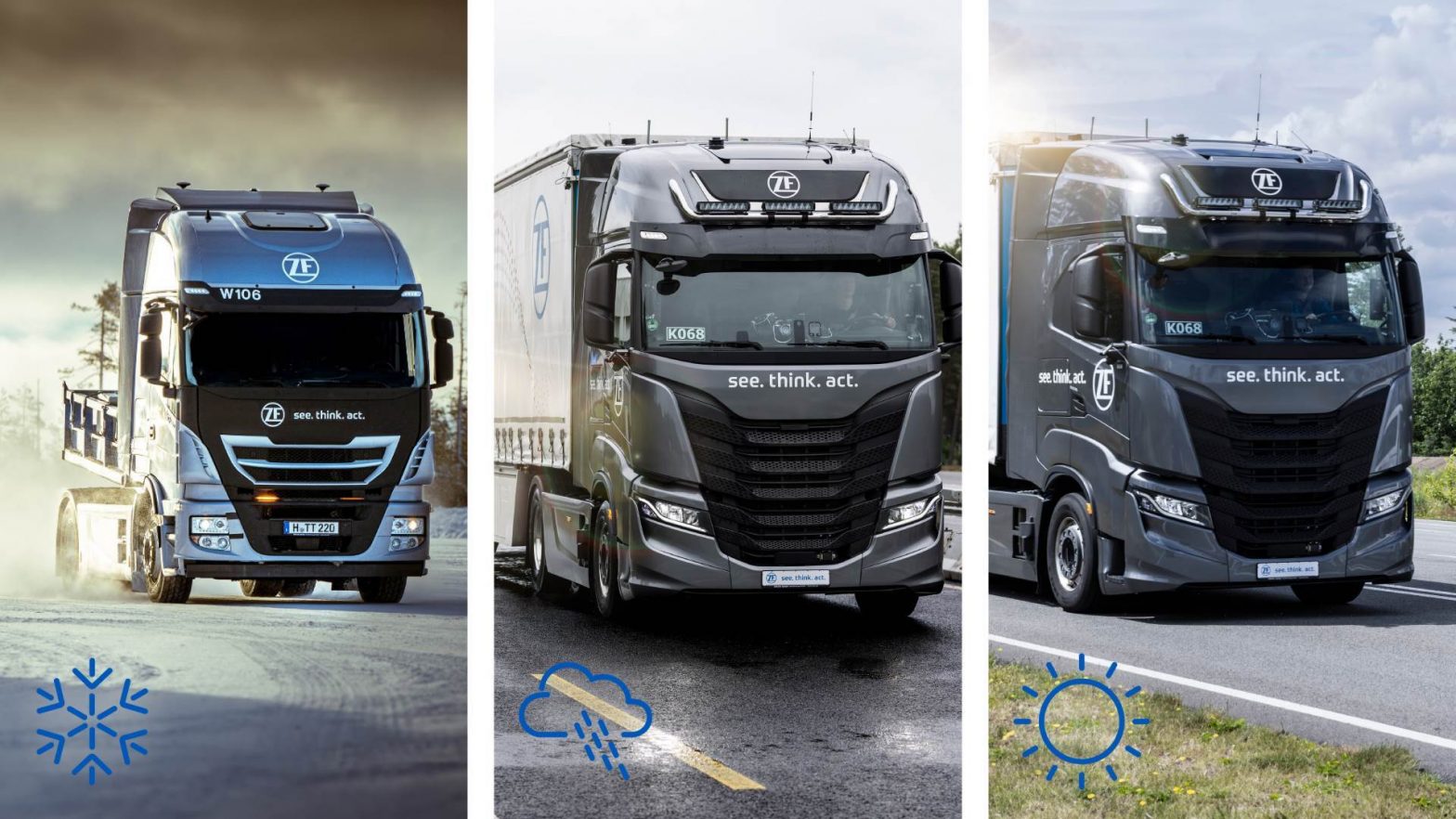ZF, which has a strong record of developing systems for commercial vehicles that can make driving safer and reduce the risk of accidents, has reported new advances in safety technologies for the sector. The global supplier currently offers commercial vehicle industry a broad product portfolio, from individual components to full system-wide solutions. By leveraging cross-divisional technology transfer capabilities, ZF is also able to develop new advancements in ADAS technologies, driving innovation in safety systems to the next level.
ZF states that it ADAS technologies rely on sophisticated software and algorithms to assess whether objects in the vicinity of the vehicle present a hazard. Intelligent systems also detect driver drowsiness or inattentiveness and determine what action, warning or intervention is needed.
ZF’s full suite of GSR ADAS technologies includes a range of intelligent systems encompassing a combination of sensors, software and automatic braking. Cameras and radars can detect obstacles and other objects on the road, including other vehicles, pedestrians and cyclists, even when they are in blind spots, while monitoring speed signs and lane markings. Tyre pressure systems check that the tyres are properly inflated to reduce the risk of a blow-out situation.
Automated lane keeping and lane changing on highways
Based on the pioneering industry project Highway Assist Lane Change (HALC), ZF has developed a system that intelligently can prevent the fear-inducing instance of a truck signaling to overtake while another vehicle is occupying that lane, helping to mitigate against a potential collision. The system harnesses ZF’s latest braking and steering platforms, OnGuardMAX, mBSP XBS and ReAX, together with an additional cabin camera that continuously monitors driver attentiveness. The system can also monitor if there is a vehicle in front and maintains a safe distance.
For lane changing, the system monitors traffic in the next lane while ensuring the driver maintains attentiveness to road conditions. When the driver wants to make a lane change, the system ensures that all necessary checks, such as mirror checks, have been carried out before signaling. If so, the system enables the truck to change lanes automatically after the turn signal has been activated. If one or both of these conditions are not met, the system will issue an alert to prevent the manoeuvre.
 Friction Adapted ADAS uses sensors and a cloud-based database to estimate road conditions and determine the amount of traction available.
Friction Adapted ADAS uses sensors and a cloud-based database to estimate road conditions and determine the amount of traction available.
Friction-adapted ADAS to detect road surface condition
The system uses sensors and a cloud-based database to fuse together information to estimate road conditions and determine the amount of traction available. The system is able to exchange information between vehicles to anticipate the road conditions on the route ahead. The accurate estimation of road friction contributes to safer driving. It supports improved performance of advanced safety systems, such as Autonomous Emergency Braking System (AEBS), Adaptive Cruise Control (ACC), Antilock Braking Systems (ABS) and Electronic Stability Control (ESC).
 A ZF test vehicle shows how lane changes can be made safer with a system that issues an alert upon the activation of the signal if a vehicle is occupies that lane.
A ZF test vehicle shows how lane changes can be made safer with a system that issues an alert upon the activation of the signal if a vehicle is occupies that lane.
Truck-Trailer Link enables next-gen truck trailer communication
ZF continues to set the pace when it comes to trailer technologies, developing an advanced truck-trailer link to enable safer high-speed data and image transfer in real-time. Functional safety is part of the design. With the truck trailer link, multiple side and reverse cameras on the trailer are able to provide the driver with the ability to view blind spots around the trailer. The system supports advanced reversing assistance with an automatic braking feature.
